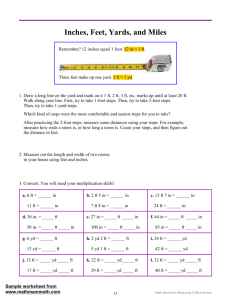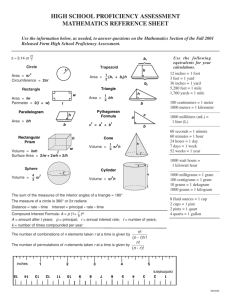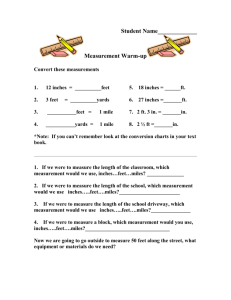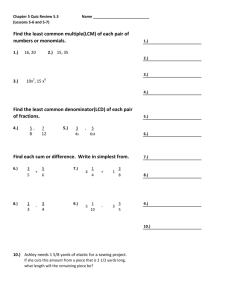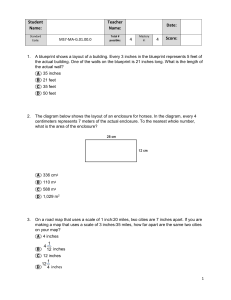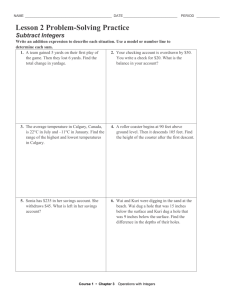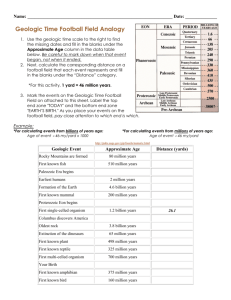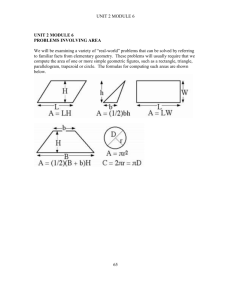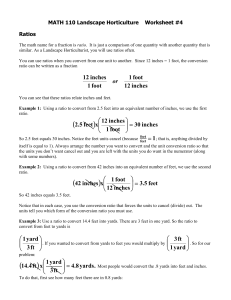The Size of the Solar System
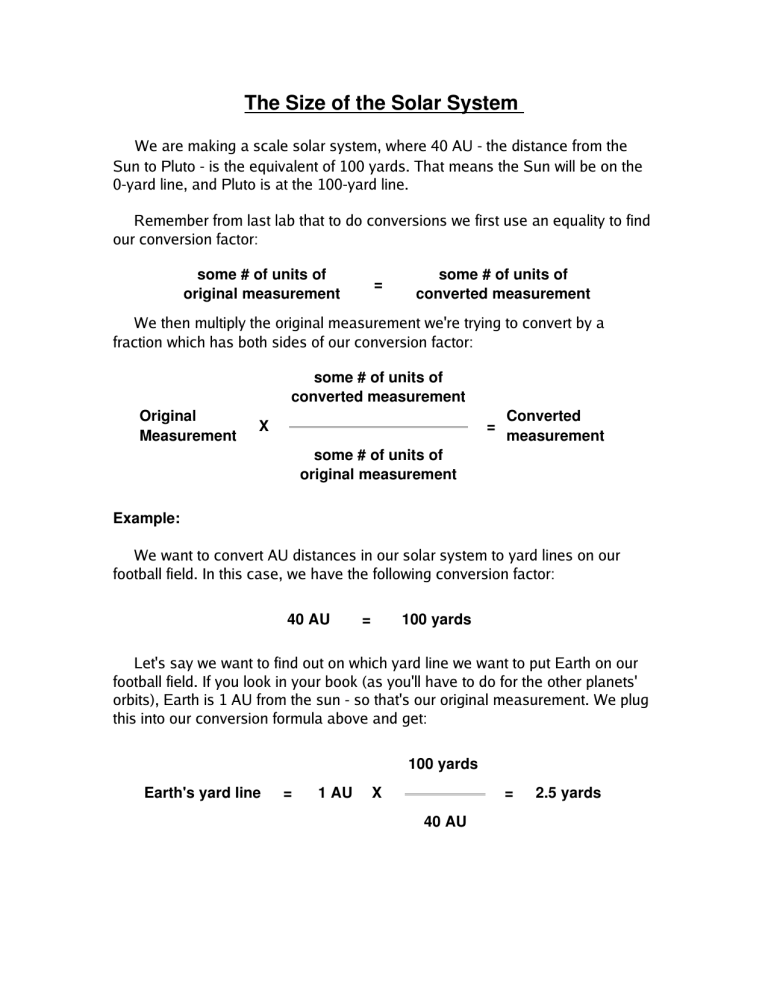
The Size of the Solar System
We are making a scale solar system, where 40 AU - the distance from the
Sun to Pluto - is the equivalent of 100 yards. That means the Sun will be on the
0-yard line, and Pluto is at the 100-yard line.
Remember from last lab that to do conversions we first use an equality to find our conversion factor: some # of units of original measurement
= some # of units of converted measurement
We then multiply the original measurement we're trying to convert by a fraction which has both sides of our conversion factor: some # of units of converted measurement
Original
Measurement
X =
Converted measurement some # of units of original measurement
Example:
We want to convert AU distances in our solar system to yard lines on our football field. In this case, we have the following conversion factor:
40 AU = 100 yards
Let's say we want to find out on which yard line we want to put Earth on our football field. If you look in your book (as you'll have to do for the other planets' orbits), Earth is 1 AU from the sun - so that's our original measurement. We plug this into our conversion formula above and get:
100 yards
Earth's yard line = 1 AU X = 2.5 yards
40 AU
We also want to do this to scale the planets' diameters. However, when we talk about planetary sizes, 1 AU is way too big a measurement – planetary diameters are usually measures in kilometers. So first we use the fact that
1 AU = 150 million kilometers.
This also means that on our football field our planetary diameters will be better measured in inches, so we have to convert that, too. So, we take our previous example where 1 AU in space is the equivalent of 2.5 yards on the football field, and convert 2.5 yards to inches:
36 inches
2.5 yards X = 90 inches
1 yard
We combine this all to tell us that 150 million km in space (1 AU) is equal to
90 inches on our football field (2.5 yards). Thus, if we want to convert km sizes of planets to inch sizes on our football field, we multiply by 90 inches, then divide by 150 million km.
Example:
Let's say we want to find out how large Earth's diameter is on our football field. If you look in your book (again, as you'll have to do with the other planets) Earth has a diameter of 12,756 km. We plug this into our formula, first starting with our conversion factor:
150 million km = 90 inches
We then multiply Earth's real diameter by a fraction made out of our conversion factor:
Earth's diameter
= 12,756 km X
90 inches
=
0.0075 inches
150,000,000 km
To complete the scale model for Earth, then, we'd put an object that is .0075 inches across at the 2.5 yard line.

